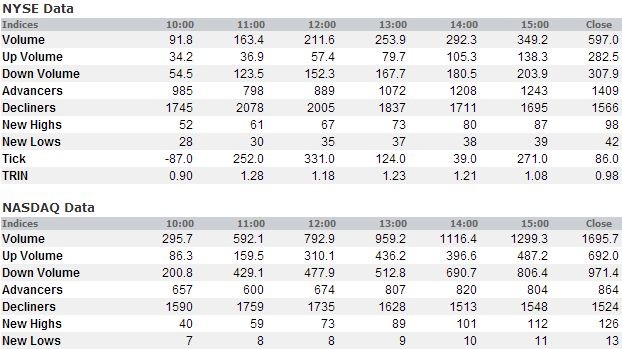Secondary Offerings What You Need to Know (ACHN CEF GMLP GNRC KORS)
Post on: 20 Август, 2015 No Comment

When a company goes public, it’s usually cause for celebration for investors. But when companies return to the capital markets to do secondary offerings of stock, the shares often get a lot less fanfare — and the results for existing shareholders can be much less profitable.
Recently, a number of companies have announced plans to make secondary offerings, and investors have responded to the news by sending their stock prices downward. But if secondary offerings are such a bad thing, why do companies do them? Let’s take a closer look at what motivates companies to make secondary stock offerings and whether they’re always a signal to sell.
Why all secondary offerings aren’t the same
Companies do secondary offerings for two primary reasons. Sometimes, the company needs to raise more capital in order to finance operations, pay down debt, make an acquisition, or spend on other needs. With this type of offering, a company actually issues brand new shares, increasing its existing share count. For instance, Achillion Pharmaceuticals ( NASDAQ: ACHN ) announced last week that it would raise $125 million in a stock offering. saying it plans to use the proceeds for research and development on its pipeline or for other purposes. Another example is master limited partnership Golar LNG Partners ( NASDAQ: GMLP ). which has done several offerings in recent months in order to finance asset purchases.
When a secondary offering involves the issuance of new shares, the main concern for existing shareholders is dilution. With an increase in shares outstanding, the stock position you own represents less of the overall company, and you’ll get a proportionately smaller share of the company’s profits going forward. The trade-off, though, is that the company gets to keep the cash raised from the offering, which increases its overall value.
Many secondary offerings occur when the business badly needs capital, and that’s most likely to happen when shares have been beaten down. Obviously, selling new stock when share prices are depressed is the worst possible timing and explains why reactions are so often negative. By contrast, closed-end fund Central Fund of Canada ( NYSEMKT: CEF ) often uses secondary offerings as ways to capitalize on premiums to its net asset value. resulting in accretion to NAV rather than dilution.
Getting out while the getting’s good
In other cases, though, secondary offerings happen because major shareholders want a chance to sell out. Recently, there’s been a spate of this type of secondary offering. Michael Kors ( NYSE: KORS ) fell nearly 10% in two days last week after saying it would do a 25-million-share offering worth roughly $1.5 billion, with founder Michael Kors selling 3 million shares he owns personally.
Often, private-equity investors and other early-stage financiers are involved in the decision to do a secondary offering. Generac ( NYSE: GNRC ). which has gained prominence recently because of its production of generators in the wake of Hurricane Sandy, will offer 10 million shares owned by CCMP Capital.
When private equity investors are involved, secondary offerings aren’t as big a cause for concern. Although the big blocks of shares cause temporary selling pressure, the offerings don’t dilute existing shareholders and have no impact whatsoever on the fundamentals of the business.
What can be problematic, though, is when corporate insiders sell out. For instance, when a founder sells shares, it can raise fears of a loss of confidence in the company going forward. Major executive sales, as Kors is going through with trusts controlled by CEO John Idol selling 2 million shares, can have the same impact.
How to handle secondary offerings
When a company whose stock you own does a secondary offering, your first move should be to figure out which type of offering is involved. If the company is issuing new shares and there’s a danger of dilution, make an assessment of whether you think the price the company will get for its shares reflects its fair value. If the company is getting a good deal, then it’s a positive sign. If it’s a fire sale, then beware.
On the other hand, if a secondary offering is helping existing major investors to reduce their positions in the stock, take a look at who’s selling out. The more of an insider the seller is, the more cause there is to wonder whether they see problems on the horizon.
Secondary offerings aren’t inherently bad, but they do require immediate attention. Understanding the motivation behind secondary offerings is essential in order to make the right move.
Should secondary offerings from Michael Kors scare you out of one of the best-performing stocks in retail? Read the Fool’s premium report to find out whether Kors has finally gotten too expensive for new investors seeking to get into the stock. We cover the key must-watch areas, opportunities, and threats to the company that investors need to know. To claim your copy, simply click here now for instant access.
Fool contributor Dan Caplinger owns shares of Central Fund of Canada. You can follow him on Twitter @DanCaplinger. The Motley Fool has no position in any of the stocks mentioned. Try any of our Foolish newsletter services free for 30 days. We Fools may not all hold the same opinions, but we all believe that considering a diverse range of insights makes us better investors. The Motley Fool has a disclosure policy .














